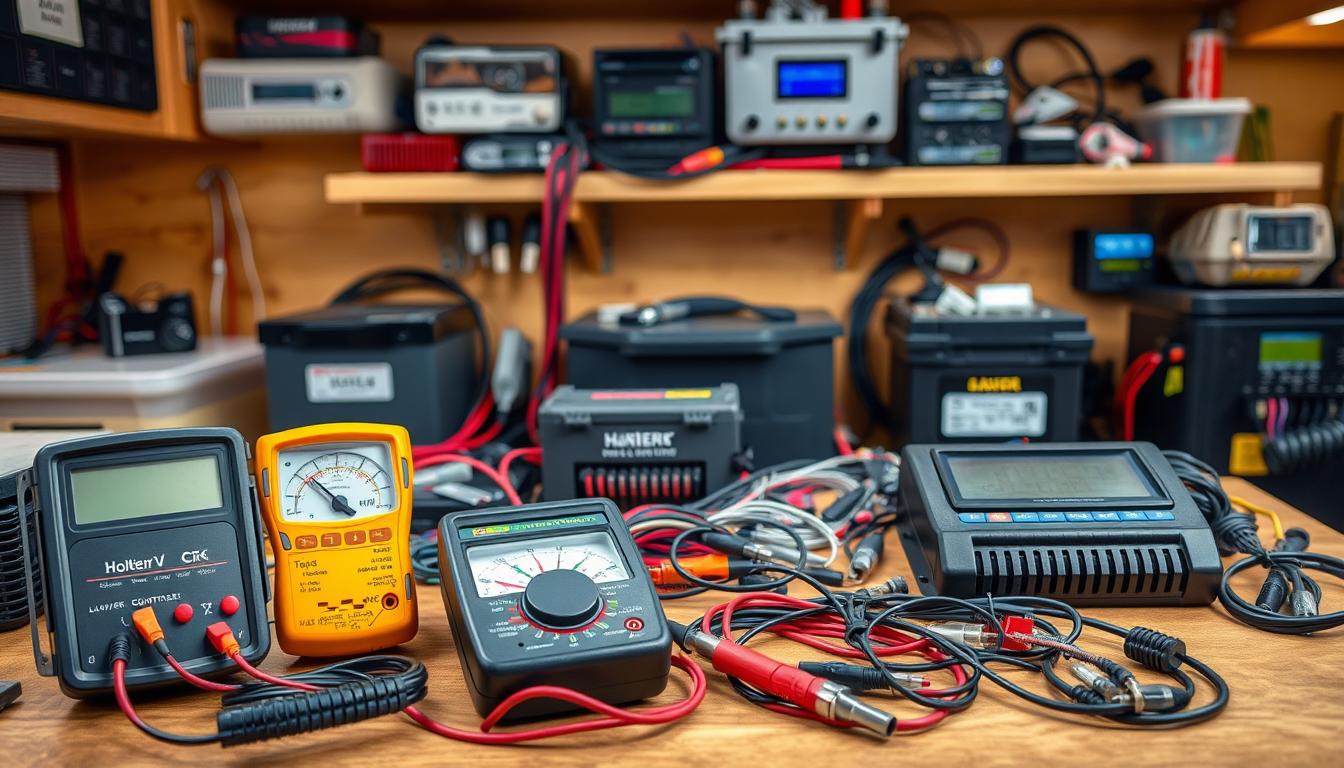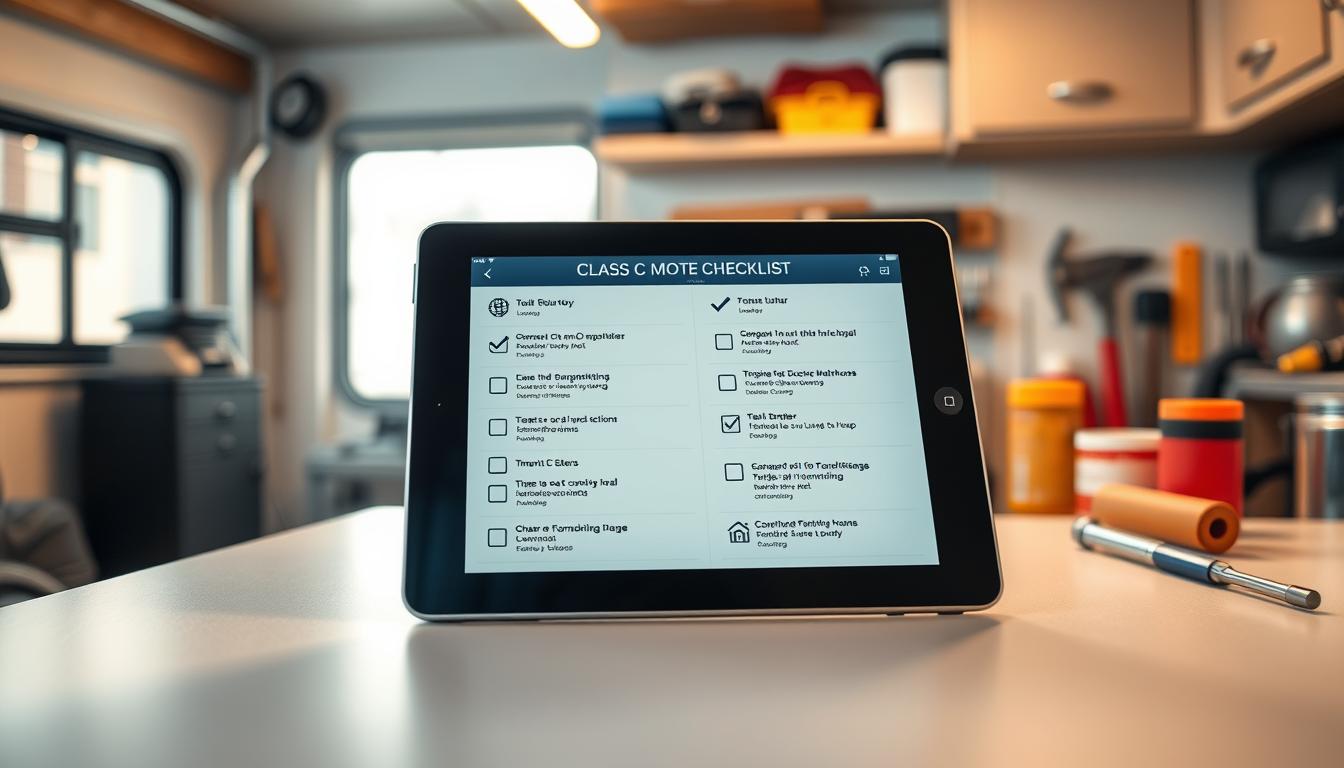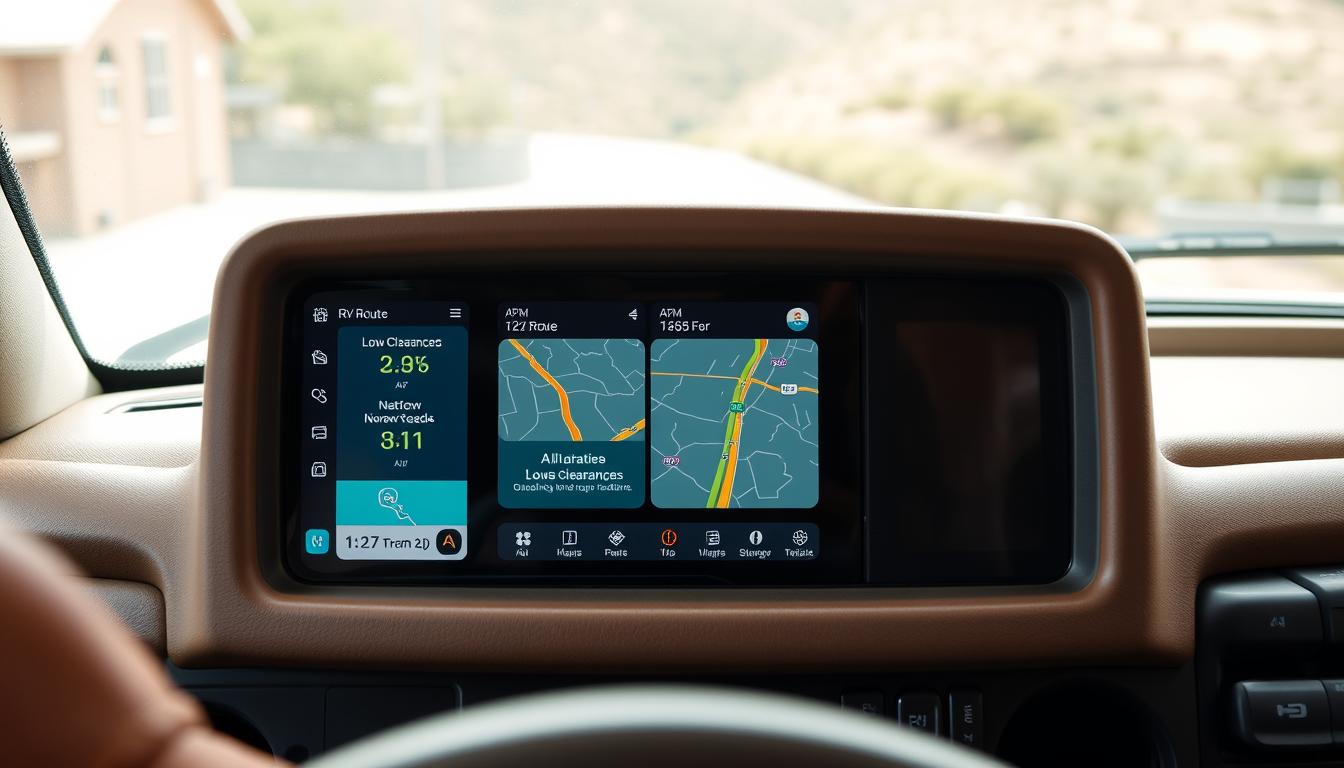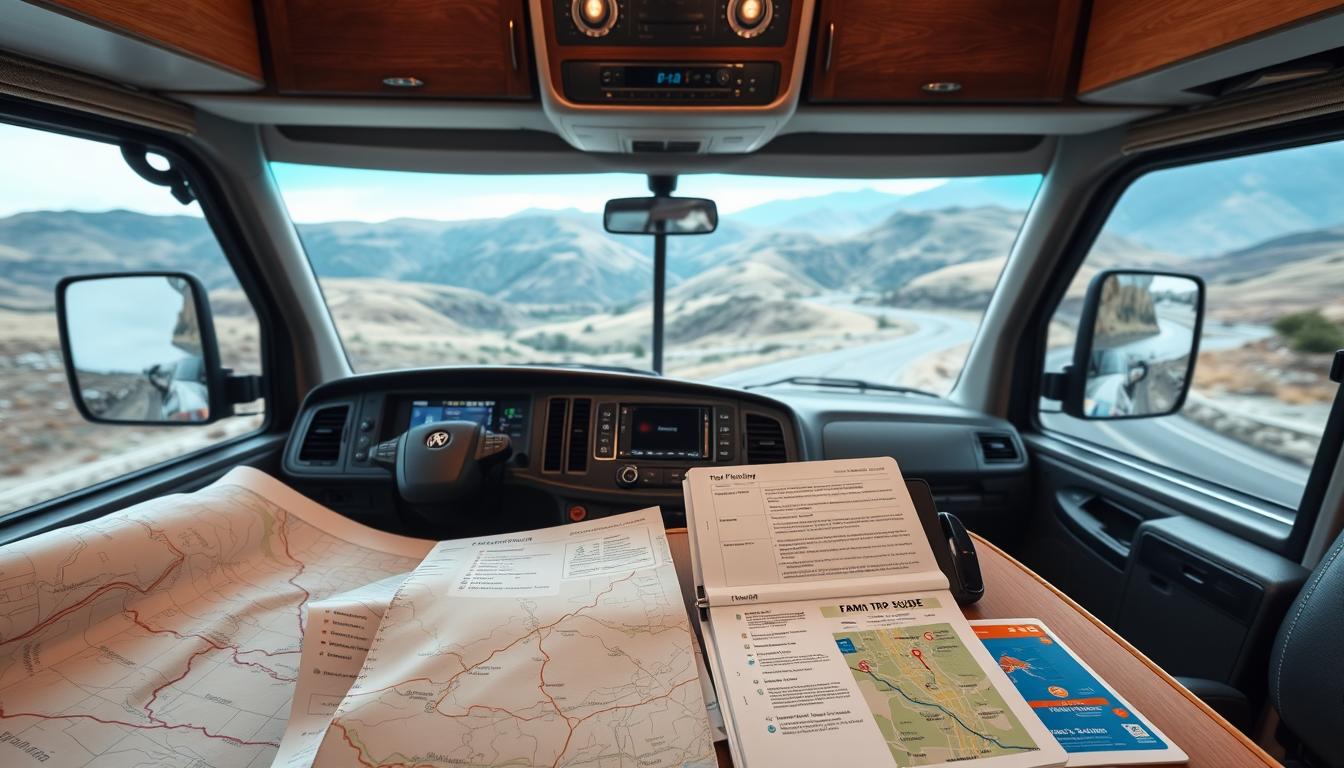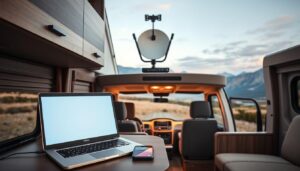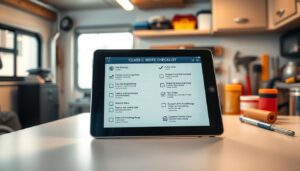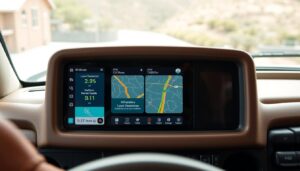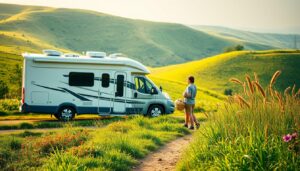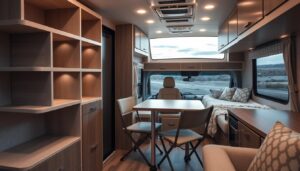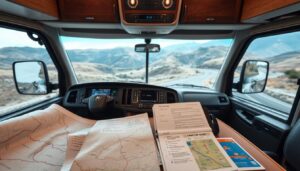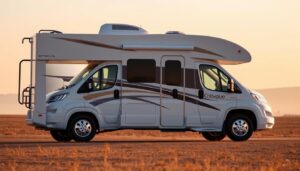Analyze and optimize power usage in your Class C motorhome with these tools
Ever thought about how well your Class C motorhome uses power? Or what tools can help you use power better? With more people traveling in RVs, knowing how to manage energy is key. It makes your trips better and greener.
Using the right tools for RV energy analysis can help a lot. You can use less traditional power and follow green practices. This guide will show you why it’s important and what tools you can use.
Understanding Power Consumption in Class C Motorhomes
Exploring the electrical systems in Class C motorhomes is key to understanding power consumption. These RVs use both direct current (DC) and alternating current (AC). DC powers lights and fans, while AC runs appliances like microwaves and air conditioners. Knowing this helps owners manage their energy use well.
Knowing the wattage of each appliance is crucial. Each device uses a certain amount of energy, adding up to the RV’s total power use. This information helps owners plan their power needs better.
Appliances like lights, kitchen items, and electronics use a lot of power. By knowing these uses, owners can use power wisely. This avoids problems like battery drain or inverter overloads. It also makes traveling in the RV better.
| Appliance | Power Rating (Watts) | Usage Time (Hours) | Daily Consumption (Wh) |
|---|---|---|---|
| LED Lighting | 10 | 5 | 50 |
| Refrigerator | 120 | 24 | 2880 |
| Microwave | 1000 | 1 | 1000 |
| Television | 150 | 3 | 450 |
The Importance of Optimizing Power Usage
Optimizing power usage in a Class C motorhome is key to a better travel experience. It’s about understanding how energy is used and finding ways to save. This helps lower energy costs, making long trips more affordable and fun.
Optimizing power usage also means using more solar power. A good energy management system means using less fossil fuels. This saves money and helps the environment. It’s a step towards a greener lifestyle on the road.
Good power management lets RVers go further without worrying about running out of energy. It’s about finding the right balance between comfort and saving energy. This makes traveling more enjoyable and less stressful.
Tools to Analyze Power Consumption in Class C Motorhome
Understanding power use in a Class C motorhome is key for better energy use and a smooth trip. The right tools for RV power analysis offer insights into energy use patterns. This helps owners manage their energy well. Battery monitors are a crucial tool in this area.
Battery monitors give RVers real-time data on voltage, current, and battery capacity. This info helps owners decide how to use power wisely. It also prevents unexpected power shortages. Good monitoring can greatly improve energy management.
Adding solar power systems boosts energy independence. These systems let motorhome owners use solar panels for power. This way, owners can have a reliable power source, even when not at a campground. Using battery monitors with solar power systems helps Class C motorhome owners manage energy well. They can enjoy longer, uninterrupted trips.
Solar Power Systems: Key Components Explained
For RV owners, knowing the parts of solar power systems is key. Solar panels and charge controllers are crucial. They make sure your RV’s energy system works well and meets your needs.
Solar Panels
Solar panels catch sunlight and turn it into electricity. Monocrystalline panels are top-notch for small spaces, perfect for RVs. Other types, like polycrystalline and thin-film, offer good value and flexibility. Knowing the differences helps RV owners pick the best panels for their systems.
Charge Controllers
Charge controllers manage electricity from solar panels to batteries. They stop batteries from getting too full, which can harm them. By controlling voltage and current, they make your solar system last longer and work better. The right charge controller means you always have power for your RV’s electrical needs.
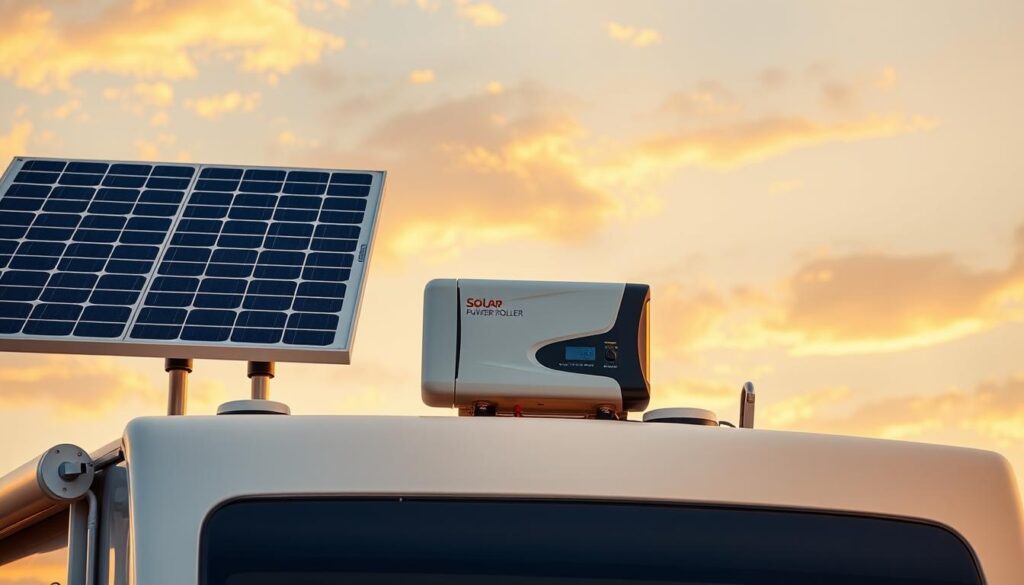
Choosing the Right Batteries for Your Motorhome
When picking batteries for your Class C motorhome, knowing the different types is key. Each type has its own pluses and minuses that can really affect your RV journey.
Types of Batteries: Pros and Cons
RV batteries come in a few main types, each with its own traits. Here’s a quick look at some popular ones:
| Battery Type | Pros | Cons |
|---|---|---|
| Lead-Acid | Cost-effective, widely available, reliable | Heavy, shorter lifespan, requires maintenance |
| AGM (Absorbent Glass Mat) | Sealed design, maintenance-free, good discharge rates | Higher cost, sensitive to temperature extremes |
| Gel | Longer lifespan, maintenance-free, safe for various arrangements | Higher initial cost, may not tolerate high discharge |
| Lithium | Lightweight, longer lifespan, faster charging | Significant initial investment, requires a compatible charger |
Understanding Amp-Hours and Capacity
Amp-hours are key to figuring out battery capacity. They show how much electric charge a battery can give over time. For RV owners, figuring out amp-hours helps know how much energy batteries need for appliances.
Keeping batteries in good shape is important for their life. Tips include cleaning terminals and avoiding deep discharges. By picking the right RV batteries and knowing amp-hours, motorhome users can have a reliable power source on the go.
Using Inverters for Efficient Power Management
Inverters are key for RV power management. They turn DC power from batteries into AC power for home appliances. It’s vital to pick the right RV inverters for efficiency and reliability in your motorhome.
Pure Sine Wave vs. Modified Sine Wave
Understanding the difference between pure sine wave and modified sine wave inverters is crucial. Pure sine wave inverters give clean AC power, just like regular outlets. They’re great for sensitive electronics like laptops and medical devices.
Modified sine wave inverters are cheaper but might not work well with all appliances. They can cause problems with devices that need precise power. Knowing what devices you have will help choose the best inverter for your needs.
Choosing the Right Inverter Size
Finding the right inverter size is key for your appliances. Look at both continuous and startup power needs. Continuous power is how much power the inverter can supply over time.
Startup power is needed for appliances with electric motors. A good inverter size ensures your RV runs smoothly without overloading. This maximizes your RV’s power management.
Monitoring Energy Consumption Effectively
Keeping an eye on energy use is key for a Class C motorhome. It helps users understand how much power they use. This way, they can make better choices. Battery monitors are crucial, showing real-time data on battery levels and health.
This info helps owners use energy wisely. It also makes sure batteries stay charged and ready.
Utilizing Battery Monitors
Battery monitors are essential for tracking energy in motorhomes. They give detailed info on battery performance. This includes how charged the battery is and how much power it has left.
Many modern monitors can connect to smartphones. This lets users check their energy levels from anywhere. Knowing how batteries perform helps owners charge them better and make them last longer.
Energy Audits for Your Appliances
Energy audits are important for knowing how much power appliances use. They show which devices use the most energy. This helps owners focus on using the most important ones first.
Replacing old, inefficient appliances with new ones can save a lot of power. Regular audits help understand energy flow better. This leads to smarter ways of managing energy in the motorhome.
Best Practices for Managing Power on the Road
Managing power usage is key for a smooth Class C motorhome trip. Using energy-efficient appliances and smart power scheduling helps. This way, you use energy wisely and avoid waste.
Using Energy-Efficient Appliances
Choosing energy-efficient appliances cuts down on power use. Look for devices with the energy-star label. They use less energy but still work well.
Switch to LED bulbs for longer life and less energy use. Other efficient appliances include:
- Refrigerators with modern cooling
- Microwaves for fast cooking
- Low-power coffee makers
Scheduling Heavy Power Usage
When you use a lot of power matters. Do activities like cooking or using air conditioning when it’s sunny. This way, you use solar energy and save your battery.
Installation Considerations for Solar Power Systems
Setting up a solar power system in a Class C motorhome needs careful thought. You can either do it yourself or hire a pro. Each choice has its own pros and cons, affecting the installation’s success.
DIY vs. Professional Installation
Many motorhome owners choose DIY solar to cut costs and tailor their system. But, it requires knowing electrical systems well. You’ll need to handle solar panels, inverters, and batteries.
DIY can lead to mistakes, so planning is key. Yet, hiring a pro brings peace of mind. They ensure the system is installed right and efficiently. They also know the best places for panels and what equipment to use, boosting system performance.
Safety Precautions During Installation
Whether you DIY or hire a pro, safety is crucial. Start by checking local solar installation rules. Good ventilation is vital to avoid harmful fumes from tools or adhesives.
When working with electricity, use insulated tools and wear safety gear. This prevents shocks or accidents. Mounting solar panels correctly is also important for safety and performance. Make sure all connections are tight to avoid problems later and keep energy use high.
Common Issues and Troubleshooting Tips
RVers often face problems with their solar power systems. These issues can ruin the fun of traveling. This section will help you solve common problems like low power output and battery drain.
Low Power Output Solutions
Low power output is a big problem for solar systems. First, check if your solar panels are clean. Dust, debris, or shade can block sunlight and reduce energy.
Make sure your panels are clear and get lots of sunlight.
- Check the angle of the panels to optimize sunlight absorption.
- Inspect the entire system for any loose connections that may disrupt energy flow.
- Evaluate the charge controller settings to ensure they align with the battery type.
Battery Drain Problems
Battery drain issues can really hurt your RV’s systems. Start by checking your batteries’ health. Old or faulty batteries can’t hold a charge well.
Also, wrong charging settings can make things worse.
- Conduct regular inspections to verify the integrity of wiring and connections.
- Monitor for any parasitic loads that may drain the batteries unexpectedly.
- Ensure batteries are charged properly to extend their lifespan and efficiency.
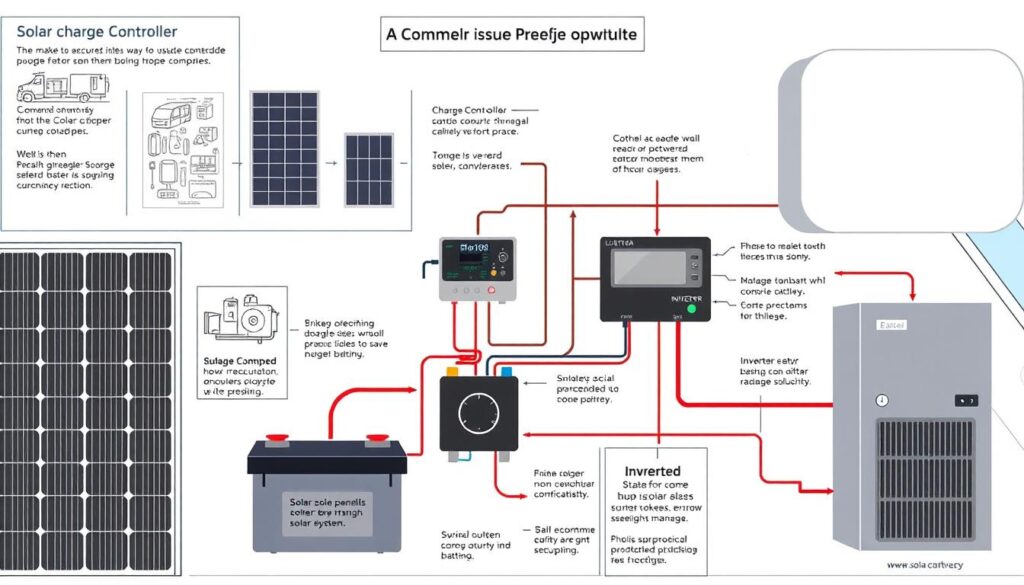
Conclusion
Optimizing power usage in your Class C motorhome is key to a better RV experience. We’ve looked at tools like solar power systems and battery selection. We’ve also talked about how to manage energy well.
These steps help you have a steady power source and be more energy independent. By using these tips, Class C motorhome owners can lower their environmental impact. They can still enjoy modern comforts while traveling.
Good energy management makes trips smoother and supports a sustainable lifestyle. Every step you take to use power better makes your RV journey more enjoyable and responsible.
FAQ
What is the significance of analyzing power usage in Class C motorhomes?
Understanding power usage in Class C motorhomes is key for better energy management. As RV travel grows, it’s important to use energy wisely. This helps owners save on costs, use less traditional power, and enjoy their trips more sustainably.
What are the different electrical systems in a Class C motorhome?
Class C motorhomes have two main electrical systems: DC and AC. DC powers things like lights and water pumps from batteries. AC is for big appliances like microwaves and air conditioners. Knowing about these systems helps you manage power better.
How can RV owners benefit from optimizing their power usage?
Optimizing power usage can cut down on energy costs. It also means using less fossil fuel, which is better for the environment. This balance makes long trips possible without worrying about running out of power.
What tools are available for monitoring power consumption in Class C motorhomes?
Tools like battery monitors track important power details. Solar power systems also help by using renewable energy. This reduces the need for campground hookups.
What components make up an effective solar power system for RVs?
A good solar power system includes solar panels, charge controllers, and batteries. Solar panels turn sunlight into electricity. Charge controllers manage energy flow to avoid overcharging batteries.
What are the different types of batteries suitable for Class C motorhomes?
There are several battery types for Class C motorhomes: lead-acid, AGM, gel, and lithium. Each has its own benefits, like weight and cost. Choosing the right one depends on your energy needs.
Why are inverters important in power management for RVs?
Inverters are key because they change DC power from batteries to AC power for appliances. Picking the right inverter, like pure sine wave or modified sine wave, ensures devices work well.
How can RV owners effectively monitor their energy usage?
RV owners can track energy use with battery monitors. They can also do energy audits to find out which appliances use the most power. This helps optimize energy use.
What are some best practices for managing power consumption on the road?
Using energy-efficient appliances like LED lights is a good start. Try to use heavy-power tasks when it’s sunny to use more solar energy. Also, check battery health regularly to make it last longer.
What safety considerations should be made during solar power system installation?
When setting up a solar power system, safety is crucial. Make sure there’s good ventilation and use the right tools. Follow guidelines for mounting panels and connecting components to avoid risks and ensure performance.
What common issues can arise with solar power systems in RVs?
Issues like low power output can be fixed by cleaning panels and ensuring sunlight. Battery drain problems might be due to bad batteries or charging settings. Regularly check wiring and connections for better system efficiency.
